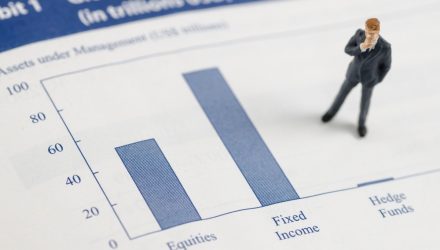There’s a lot of uncertainty floating around in the capital markets, but investors can ease their minds by ensuring they get a healthy dose of fixed income exposure in their portfolios. Even when the coronavirus pandemic cases start to dwindle, the after-effects could still upend equities.
When equities markets go awry, investors will typically pile into safe haven assets like bonds. As such, this is where fixed income provides a cushion against stock market downturns.
“Fixed income assets act as a cushion to an investment portfolio when the equity market experiences losses,” says Linda Zhang, founder of Purview Investments in New York.
“When equity markets contract, fixed income tends to either go flat or up in general as an asset class,” Zhang added.
Before investors simply dive into fixed income, market experts advise using the proper allocation strategy.
“Creating an asset allocation strategy that increases allocation to bonds and cash in advance of the bear market/recession is a best practice for both advisors and investors,” said Linda Erickson, a senior partner and the president of North Carolina-based Erickson Advisors.
Investors can also use exchange-traded funds (ETFs) to get fixed income exposure without owning the actual bonds themselves. Here are a pair of investment-grade corporate bond options:
- Vanguard Short-Term Corporate Bond ETF (NASDAQ: VCSH): VCSH tracks the performance of a market-weighted corporate bond index with a short-term dollar-weighted average maturity–the Bloomberg Barclays U.S. 1-5 Year Corporate Bond Index. VCSH debt holdings mirror those found within the index, so U.S. dollar-denominated, investment-grade, fixed-rate, taxable securities issued by the industrial, utility, and financial companies comprise the debt portfolio. Furthermore, in order to curb volatility in the bond markets, maturities are relatively short-duration issues–between 1 and 5 years until maturity.
- SPDR Portfolio Short Term Corp Bd ETF (NYSEArca: SPSB): SPSB seeks to provide investment results that correlate with the Bloomberg Barclays U.S. 1-3 Year Corporate Bond Index. Once again, O’Leary would benefit from the reduced exposure to volatility with SPSB’s investment in shorter-duration debt with maturities less than three years. In addition, SBSP minimizes credit risk by constructing a debt portfolio that contains only investment-grade bonds with companies that are less likely to default.
A Yield-Focused ETF
For fixed income investors seeking yield, they can look to the Principal Active Income ETF (YLD). YLD is an actively managed fund that seeks to achieve its investment objective by investing its assets in investment grade and non-investment grade fixed income securities and in equity securities.
The fund’s Sub-Advisors, actively and tactically allocates the fund’s assets among fixed income securities and equity securities in an effort to take advantage of changing economic conditions that the Advisor believes favors one asset class over another.
For more relative market trends, visit ETF Trends.

